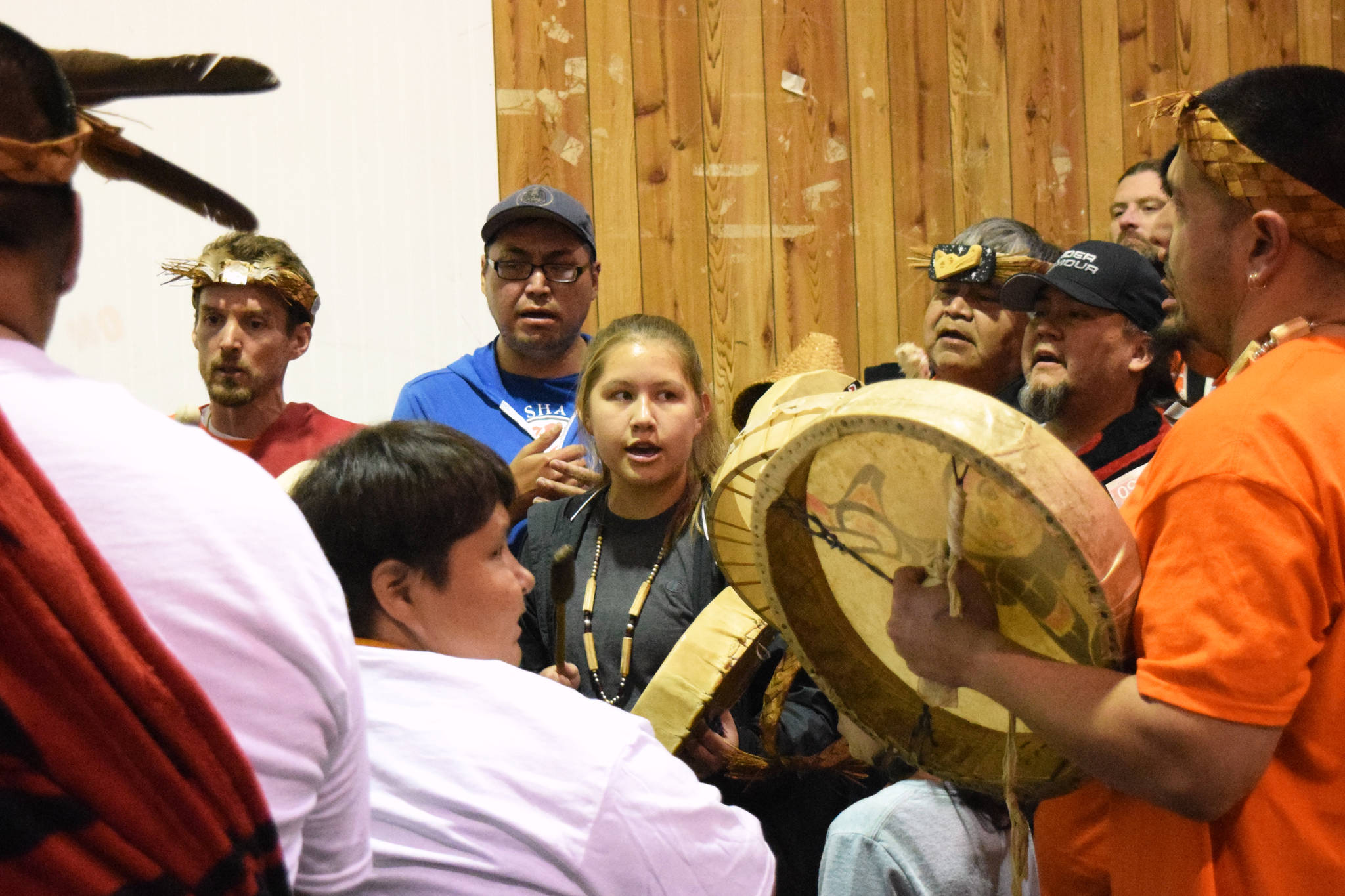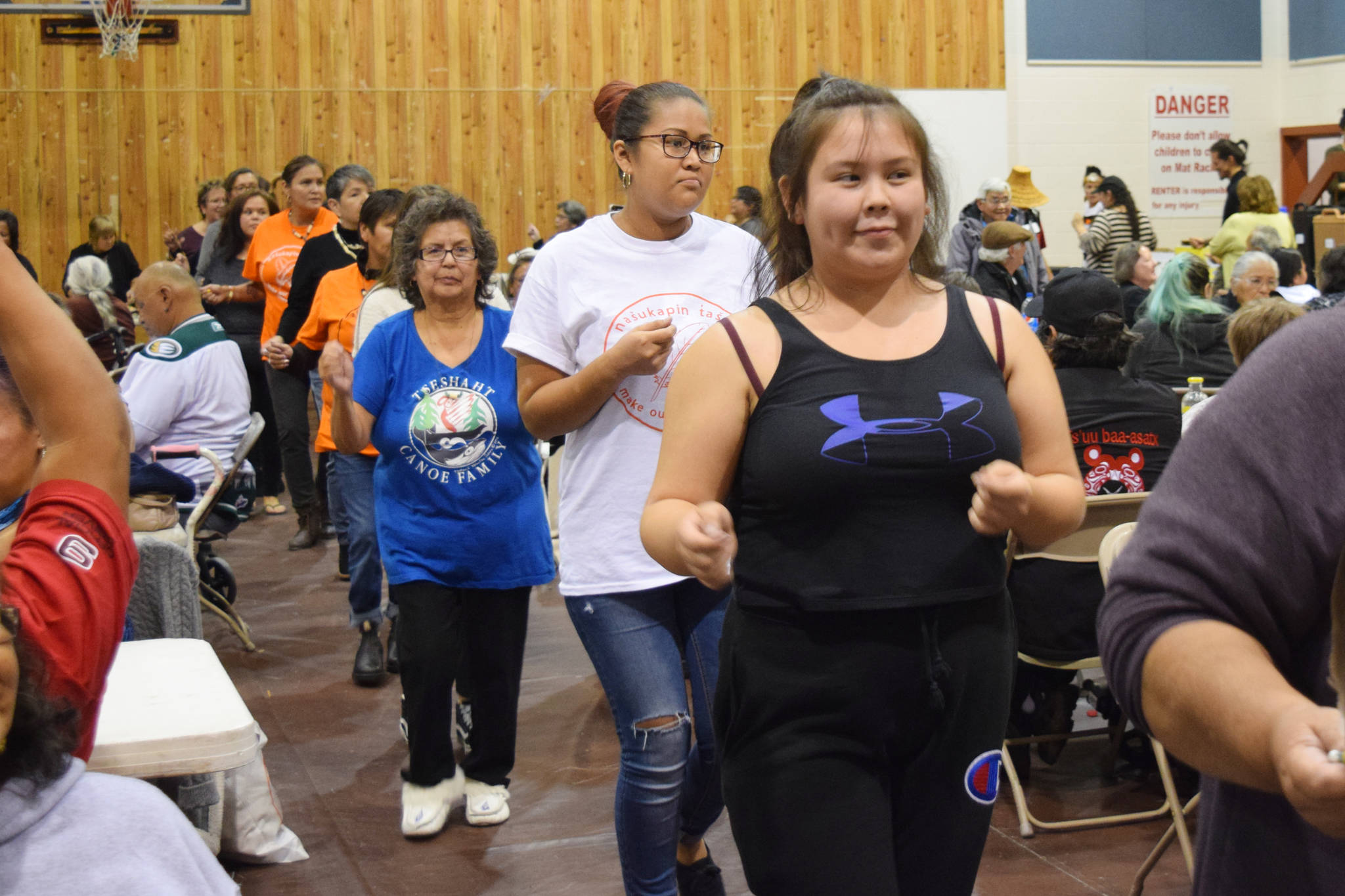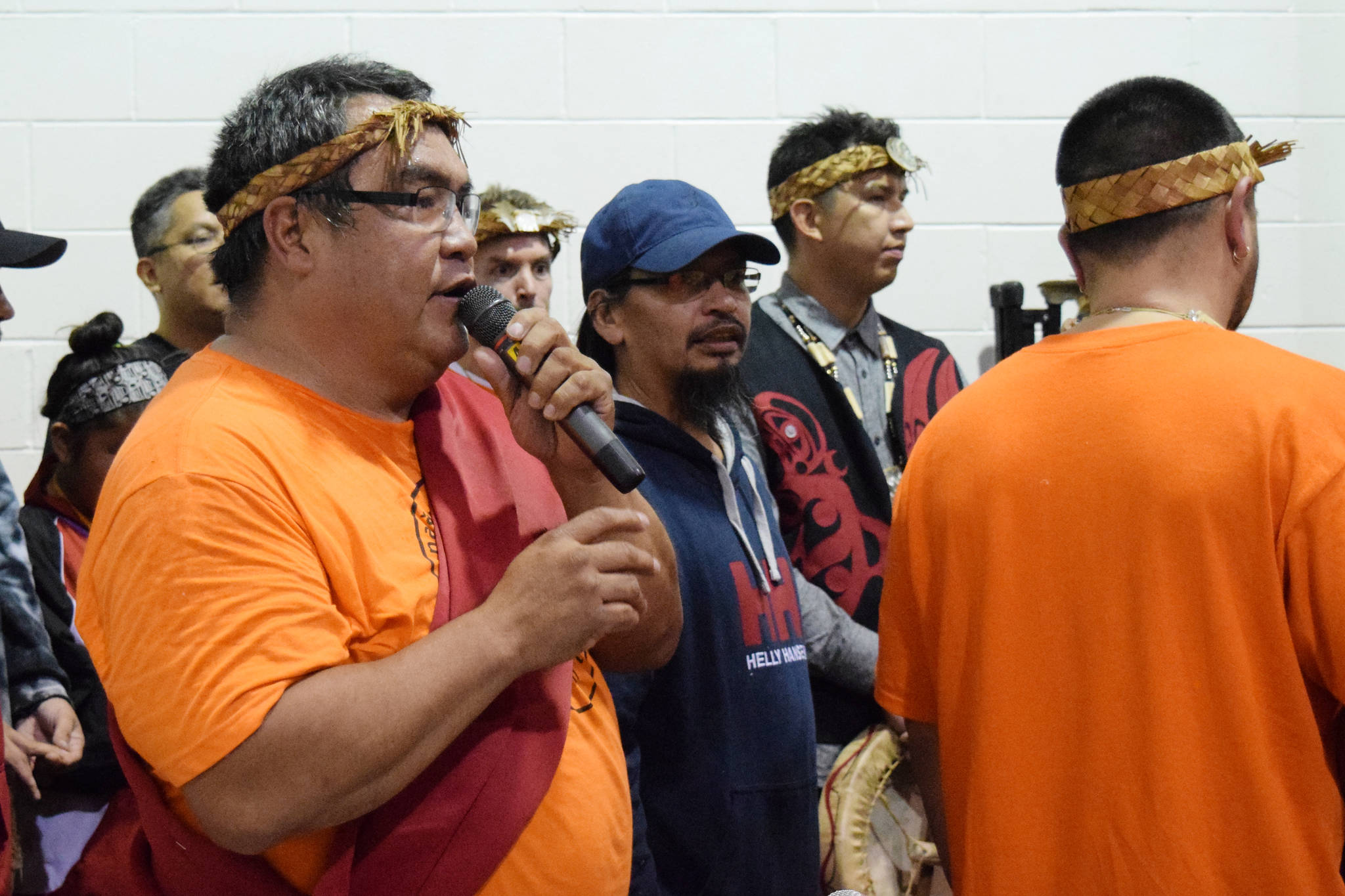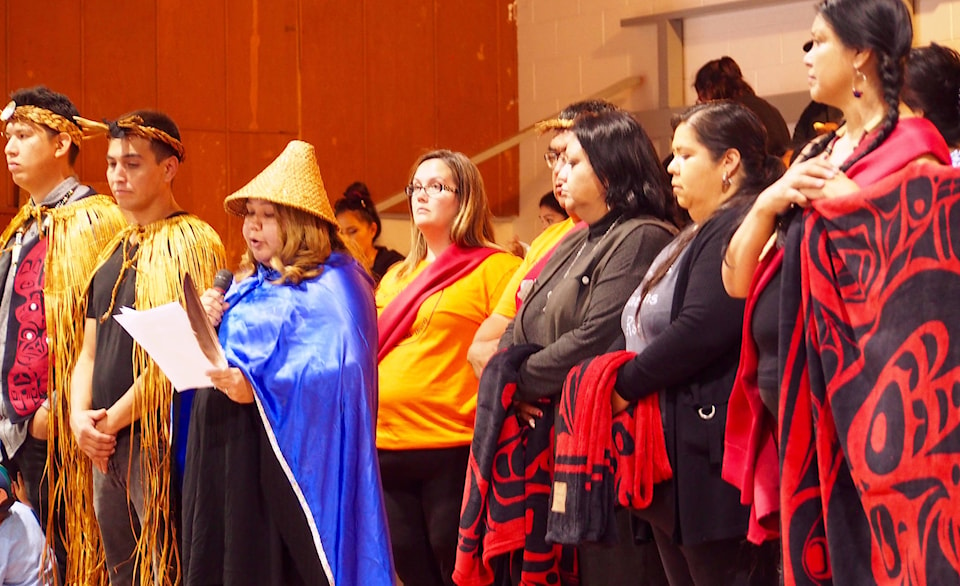MIKE YOUDS
SPECIAL TO THE NEWS
After three days of helping hundreds of people heal from the residential school legacy, Tseshaht First Nation called on federal and provincial governments to honour their commitments and play their part.
“There is still pain, there is still hurt,” said Martin Watts in closing remarks at Reclaiming the Lost Souls of Alberni Inlet Residential School (AIRS).
“We don’t want our children to see that anymore. We want to see them grow.”
Healing ceremonies were held steps away from the site of AIRS, a church-run residential school attended by Indigenous children from across B.C. Tseshaht forced the closure of AIRS in 1973.
Tseshaht Chief Councillor Cynthia Dick delivered a closing statement Saturday to participants in Maht Mahs Gym, drawing a direct line between colonial practices of the past and government policy in the 21st century. Proper redress would allow them access to land and timber in their territory, the means for a sustainable future, she said.
“Tseshaht First Nation is calling upon the provincial and federal governments to honour their commitments of adopting and implementing the United Nations Declaration on the Rights of Indigenous Peoples and the Truth and Reconciliation (TRC) calls to action … This would allow Tseshaht to continue to do this important work without having to beg for access to our own resources within our territories,” she said.
Dick also urged Ottawa to provide more information on the 2015 TRC report, citing uncertainties surrounding five generations of children who lost their lives in residential schools between 1891 and 1973.
“We are seeking clarification and closure to understand how people died under church and government care and how the records were kept,” Dick said.
READ: Names of children who died in residential schools released in sombre ceremony
The National Centre for Truth and Reconciliation on Monday at a ceremony in Gatineau, Quebec revealed the names of 2,800 children who died in residential schools.
Centre director Ry Moran said “it is essential these names be known.” The 2,800 to be honoured are those whose deaths and names researchers have been able to confirm. Moran said there are another 1,600 who died, but remain unnamed.
A total of 150,000 Indigenous children are thought to have spent at least some time in a residential school.
Chief Dick described residential schools as a “dark time in history” and mourned the children who did not survive the experience. Estimates of school-related deaths across Canada range from 3,200 to 6,000, though records are incomplete.
Tseshaht believe that when AIRS, known as Peake Hall, was torn down, the souls of many children found refuge in neighbouring homes and buildings. Reclaiming these lost souls therefore plays an important part as the community continues to heal.
— With files from The Canadian Press



